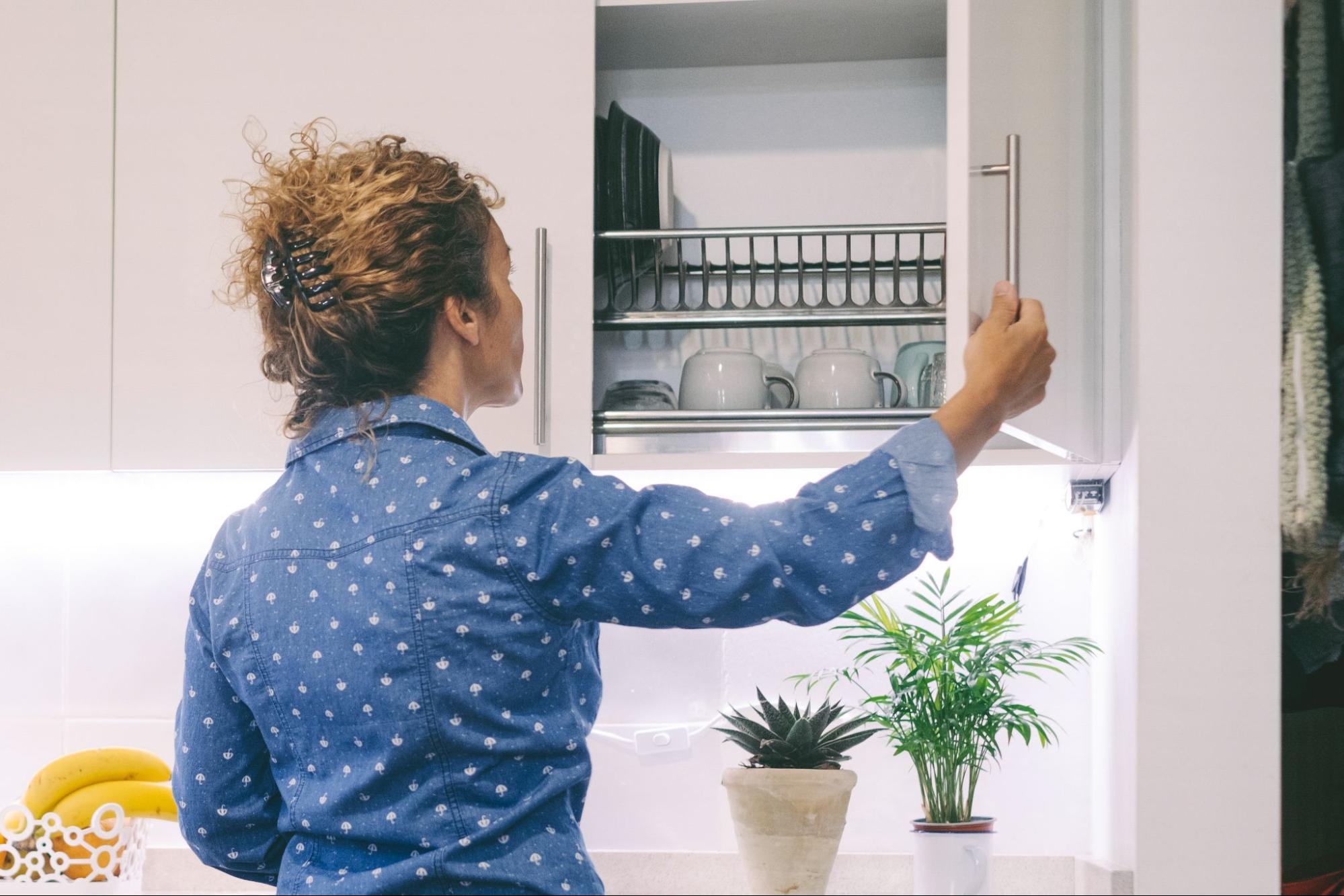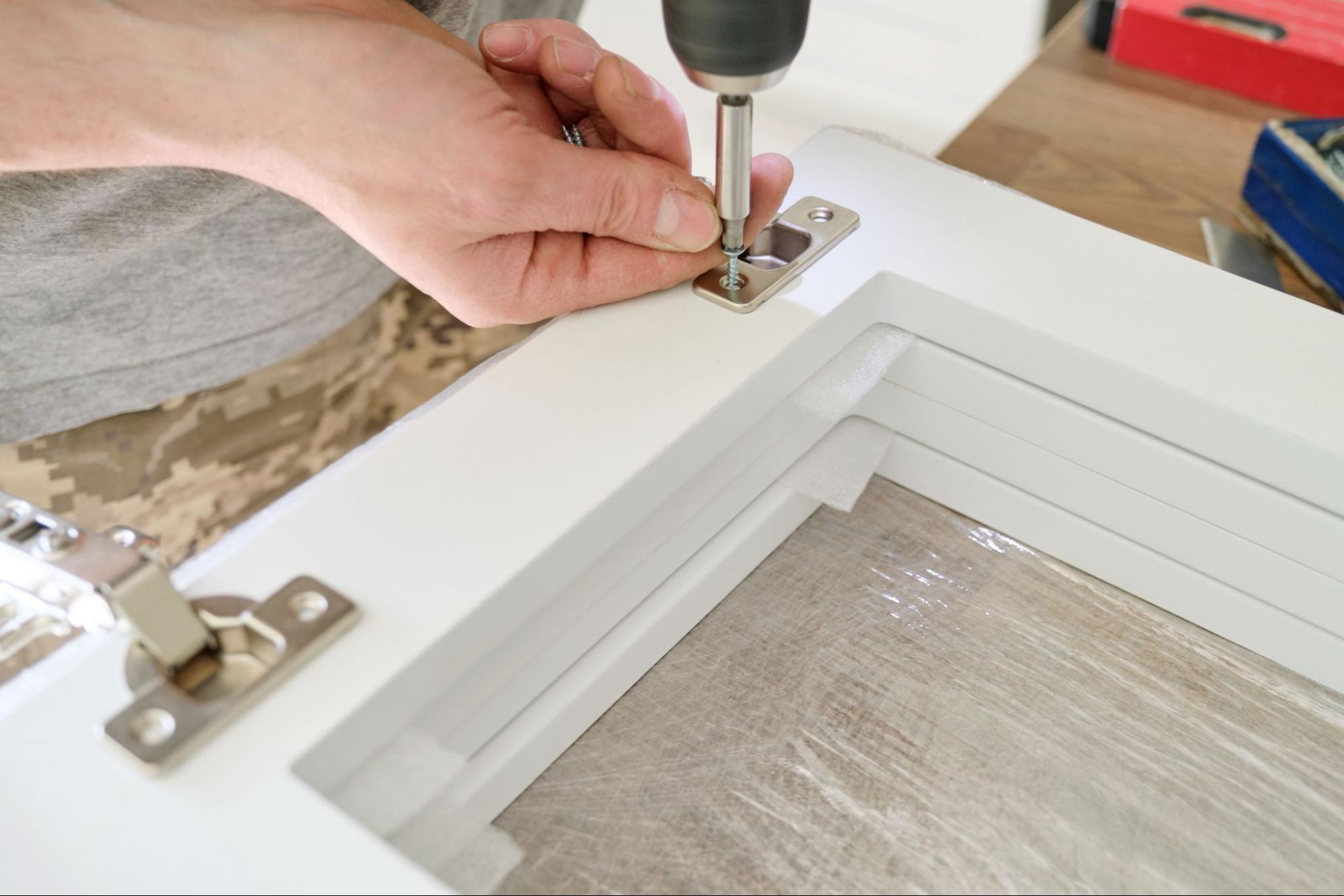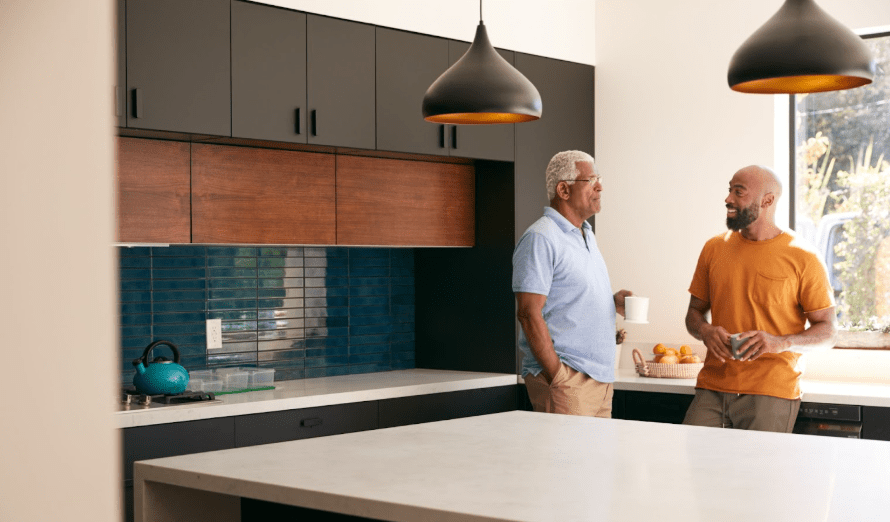Cabinet doors that don’t close properly or sit unevenly can be frustrating. A slight misalignment can make an entire kitchen or bathroom look messy, no matter how clean or organized. Over time, frequent use causes hinges to loosen, shift, or wear out, leading to gaps, slanted doors, or doors that won’t stay closed. Fortunately, adjusting cabinet hinges is a simple fix that anyone can do with the right tools and steps. A few precise screwdriver turns can bring your cabinets back to perfect alignment.
How to Adjust Cabinet Hinges Based on Hinge Type
Different cabinet hinges require specific adjustments for proper alignment. Some offer complete control, while others have limited movement. Knowing the hinge type helps make precise corrections without damage:
European Concealed Hinges
European concealed hinges are hidden when closed, creating a sleek look. They have three adjustment screws: side-to-side for gap alignment, height for positioning, and depth for door spacing. Slightly turning each screw corrects misalignment. Over-adjusting can cause uneven gaps or improper closure. Minor, careful tweaks ensure the best fit.
Soft-Close Hinges
Soft-close hinges prevent slamming by using a built-in tension system. A screw adjusts closing speed—tightening increases resistance, and loosening reduces it. If the door slams, increase resistance; if it closes too slowly, reduce it. These hinges also have side, height, and depth adjustments like European hinges.
Self-Closing Hinges
Self-closing hinges use a spring mechanism to pull doors shut. If the door isn’t closing correctly, tightening the hinge screws or repositioning the hinge plate helps. Over time, these hinges can lose tension. Replacing the hinge may be necessary if adjustments don’t fix the issue.
Overlay Hinges
Overlay hinges allow cabinet doors to sit over the frame. Adjustments involve shifting the mounting plate to align height and repositioning screws to control overlay distance. If a door sticks out too much, slightly moving the hinge inward helps. Proper positioning ensures a flush, gap-free closure.
Inset Hinges
Inset hinges position doors inside the cabinet frame, requiring precise alignment. They have limited adjustability, so small screw movements are key. Using shims or spacers can improve positioning if the door sits too deep. Even spacing and a flush fit is crucial for inset doors to look seamless.
How to Adjust Cabinet Hinges for a Perfect Fit
Cabinet doors that don’t align properly can make a room look disorganized. Whether the doors are too high, too low, or off-center, hinge adjustments can correct the issue. Fixing these minor problems improves the overall appearance and functionality of your cabinets. Properly adjusted hinges prevent long-term wear and tear on the doors and frames. You can make your cabinets look professionally installed again with a little effort.
Tools Needed for Cabinet Hinge Adjustments
A basic screwdriver is the primary tool required for hinge adjustments. A Phillips-head screwdriver works for most hinges, though some may require a flathead. A tape measure helps check gaps between doors to ensure even spacing. Good lighting is also necessary to see hinge placement and screw positions. In some cases, you may need a drill if screws are stripped or holes have worn out.
Identifying Common Cabinet Door Issues
Cabinet doors can develop several alignment problems over time. If a door is too far to one side, it may be misaligned with the cabinet frame. Loose hinges can prevent doors from closing fully, leaving gaps when shut. Some doors may hang too high or too low, making them uneven with neighboring doors. Each of these issues can be fixed by adjusting the correct hinge screws.

How to Adjust Cabinet Hinges for Alignment
Uneven cabinet doors can ruin the look of a kitchen or bathroom. Doors that don’t line up correctly can also scrape against each other, leading to damage. Adjusting the hinges helps correct any crooked or misaligned doors. By making small turns to the hinge screws, you can align the doors with the cabinet frame and neighboring doors. The process is straightforward and requires only a few minutes per door:
Side-To-Side Adjustments for Even Gaps
Side-to-side adjustments correct the gaps between cabinet doors. Locate the screw in the center of the hinge, which controls the door’s horizontal movement. Turning the screw to the right moves the door closer to the cabinet’s edge. Turning it to the left moves the door outward, creating more space. Make small turns, check the alignment, and continue adjusting until the doors are evenly spaced.
Up-And-Down Adjustments for Height Issues
If a cabinet door is too high or low, adjusting the height can fix it. The height is controlled by loosening the screws on the hinge plate attached to the cabinet. Once loosened, the door can be moved slightly up or down to the correct position. Hold the door steady while tightening the screws back into place. Always check the alignment with the surrounding doors before finalizing the adjustment.
How to Adjust Cabinet Hinges for Proper Closure
Cabinet doors that don’t close properly can be annoying. They may remain slightly open or close with too much resistance. It often happens when hinges shift or the depth setting isn’t correct. Adjusting the hinge depth and tension helps the doors close smoothly. Quick tweaks can prevent doors from slamming shut or staying slightly ajar.
Depth Adjustments to Prevent Gaps
The depth screw on a hinge controls how far the door sits from the cabinet frame. Turning the screw clockwise moves the door inward, making it sit closer. Turning it counterclockwise pushes the door outward, creating more space. Adjustments should be made gradually to avoid overcorrecting. Always test the door after each turn to ensure it closes properly.
Fixing Soft-Close and Self-Closing Hinges
Soft-close hinges can lose tension over time, making them close too quickly or slowly. Adjusting the built-in tension screw can fix this issue. Turning the screw one way increases resistance, while the other direction decreases it. Self-closing hinges may need tightening if they fail to shut the door completely. If the hinge is damaged, replacing it may be the best option.
How to Adjust Cabinet Hinges for Long-Lasting Performance
Regular maintenance keeps cabinet hinges in good condition. Loose or worn hinges can cause long-term problems, such as doors sagging or closing incorrectly. Checking for minor issues prevents major repairs later. Tightening screws and lubricating moving parts keeps hinges working smoothly. A little care goes a long way in preserving the functionality of your cabinets.
Tighten Loose Hinges Periodically
Screws in cabinet hinges can loosen over time, especially in frequently used doors. Checking the hinges every few months can prevent misalignment issues. If a screw is loose, tightening it with a screwdriver keeps the hinge secure. If the screw no longer tightens, the hole may be worn out and need reinforcement. Reinserting the screw with a wooden toothpick and glue can restore its grip.
Lubricate Hinges to Reduce Squeaking
Dry or rusty hinges can start making noise when opening and closing. Applying a small amount of lubricant helps reduce friction and eliminates squeaking. Silicone-based lubricants work best because they don’t attract dust or grime. Apply a few drops to the moving parts of the hinge and wipe off any excess. Doing this occasionally keeps cabinet doors opening smoothly without resistance.
How to Adjust Cabinet Hinges for Long-Term Stability
Cabinet hinges can wear down over time, causing doors to become unstable. Minor adjustments and preventive measures keep them functioning correctly. Regularly checking for signs of wear ensures they last longer. Reinforcing weak screws and replacing worn hinges prevent future problems. Taking care of these details helps avoid frequent repairs or replacements:
Check for Hinge Wear and Tear
Hinges that creak, wobble, or show rust need closer inspection. Over time, metal parts can weaken, affecting how well the doors stay in place. Look for cracks or loose rivets in the hinge itself. If the hinge is damaged, replacing it is the best solution. Investing in high-quality hinges prevents recurring issues.
Reinforce Hinge Screws for Better Support
Screw holes can weaken if adjusted too many times. If screws keep loosening, inserting wooden toothpicks with wood glue into the hole can help. This method fills the space and allows the screw to grip better. Using longer screws also provides extra support if the existing ones no longer hold well. Reinforcing weak hinge areas keeps cabinet doors stable for years to come.
How to Adjust Cabinet Hinges for a Smooth and Stylish Look
Well-adjusted cabinet doors improve both functionality and appearance. Smooth, even doors make a kitchen or bathroom look polished and well-maintained. Proper alignment prevents gaps and uneven spacing. Making these minor improvements ensures that doors open and close with ease. A few careful tweaks can make cabinets look brand new again:
Final Inspection and Testing
After adjusting the hinges, check the doors carefully. Open and close them several times to ensure they move smoothly. Look for any remaining gaps or uneven spacing. Tighten any screws that may have loosened during the process. Taking the time for a final check ensures long-lasting results.
When to Call a Professional for Hinge Issues
Some cabinet hinge problems may be challenging to fix alone. If a hinge is broken or a door is misaligned, a professional cabinet installer may be needed. Complex issues, such as warped cabinet frames, require expert repairs. Calling a professional saves time and frustration if adjustments don’t resolve the issue. A skilled repair ensures cabinets function properly without recurring problems.
Get Perfect Cabinet Alignment With Simple Hinge Adjustments
A well-aligned cabinet door isn’t just about aesthetics—it’s about functionality, durability, and the satisfaction of a well-maintained space. A few screwdriver turns can restore smooth operation, eliminate gaps, and prevent long-term wear. Instead of tolerating uneven doors or struggling with stubborn closures, take control and make the adjustments yourself. The tools are simple, the process is straightforward, and the results are instantly rewarding. Minor fixes today can prevent more significant repairs tomorrow, ensuring your cabinets stay as flawless as the day they were installed.
Transform your cabinets with expert advice—read more on the North American Cabinet LLC blog.



